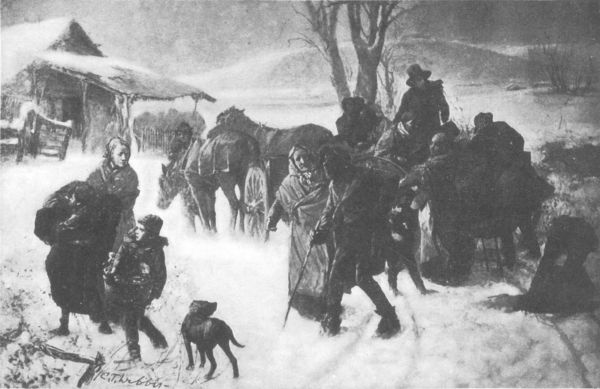The
Underground Railroad
from Slavery to Freedom

THE UNDERGROUND RAILROAD:
LEVI COFFIN RECEIVING A COMPANY OF FUGITIVES IN THE OUTSKIRTS OF CINCINNATI, OHIO.
(From a painting by C. T. Webber, Cincinnati, Ohio.)
The
Underground Railroad
from Slavery to Freedom
A Comprehensive History
Wilbur H. Siebert
With an Introduction by
Albert Bushnell Hart
DOVER PUBLICATIONS, INC.
Mineola, New York
This Dover edition, first published in 2006, is an unabridged republicationof The Underground Railroad from Slavery to Freedom, originally published by TheMacmillan Company, New York and London, in 1898. The original fold-outmap facing page 113 has now been set into the book on three separate pagesin the same location.
International Standard Book Number: 0-486-45039-2
Manufactured in the United States of America
Dover Publications, Inc., 31 East 2nd Street, Mineola, N. Y. 11501
INTRODUCTION
BY ALBERT BUSHNELL HART
Of all the questions which have interested and dividedthe people of the United States, none since the foundationof the Federal Union has been so important, so far-reaching,and so long contested as slavery. During the first half ofthe nineteenth century the other great national questionswere nearly all economic—taxation, currency, banks, transportation,lands,—and they had a strong material basis, aflavor of self-interest; but though slavery had also aneconomic side, the reasons for the onslaught upon it werechiefly moral. The first objection brought by the slave-poweragainst the anti-slavery propaganda was the cryof the sacredness of vested and property rights againstattack by sentimentalists; but what dignified the wholecontest was the very fact that the sentiment for humanrights was at the bottom of it, and that the abolitionists felta moral responsibility even though property owners suffered.The slavery question, which in origin was sectional, becamenational as the moral issues grew clearer; and finallyloomed up as the dominant question through the determinationof both sides to use the power and prestige of thenational government. From the moral agitation came alsothe personal element in the struggle, the development ofstrong characters, like Calhoun, Toombs, Stephens andJefferson Davis on one side; like Lundy, Lovejoy, Garrison,Giddings, Sumner, Chase, John Brown and Lincoln on theother.
Among the many weak spots in the system of slavery nonegave such opportunities to Northern abolitionists as the locomotive[viii]powers of the slaves; a "thing" which could hear itsowner talking about freedom, a "thing" which could steeritself Northward and avoid the "patterollers," was a thing ofimpaired value as a machine, however intelligent as